Cyrus The Great – The Most Powerful King in The World
Cyrus II, also referred to as Cyrus the Great, was the first ruler of the Achaemenid Empire and the fourth king of Anshan.
Media, Lydia, and Babylonia were three of the most formidable kingdoms at the time that Cyrus led several military campaigns against. He kept the local government mostly intact while uniting much of the Middle East under Persian power through his conquests. He created the Achaemenid Empire by providing some continuity and therefore gaining the elite's allegiance.
In this blog, we introduce you to Cyrus the Persian and talk about his life, empire, accomplishments, and religion.
When Was Cyrus The Great Born?
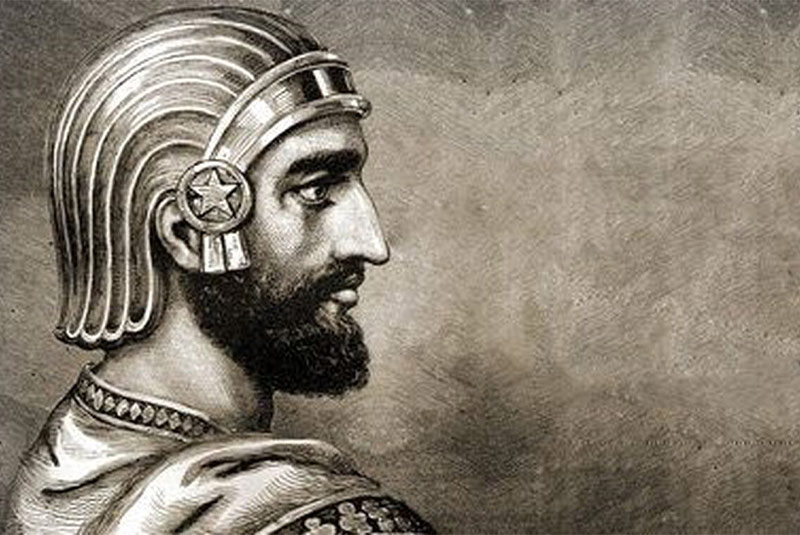
Between 590 and 580 BCE, Cyrus was born in Media or, more likely, Persis, the modern province of Fars in Iran. His name's origin is unknown, so it's unclear if it was given to him as a throne name or a personal name before he became a ruler. Like many other ancient kings, Cyrus the Great was born into a noble family. After his father, Cambyses I passed away, Cyrus took control of the Achaemenid empire. He grew his ancestral country into a powerful empire. He was victorious not just through conquering but also through his extraordinary patience and kindness for those he conquered. About Cyrus's early years, almost nothing is available. Only the writings of Greek authors like Herodotus, Ctesias, and Xenophon, who offer contradicting versions of a primarily legendary nature, have managed to retain the numerous oral traditions about his birth and youth.
Cyrus the Persian was the son of the Persian king Cambyses (c. 580-559 BCE) and the Median princess Mandane, daughter of the Median monarch Astyages, according to Herodotus' most well-known source (585-550 BCE). Cyrus was king of Anshan (a kingdom in Fars with a mixed Elamite and Persian people) and a son of Cambyses, according to contemporary Achaemenid writings like the Cyrus Cylinder and the Behistun Inscription. However, the majority of academics concur that Cyrus the Great was at least the second ruler by that name to govern Persia. He was described as the "son of Cambyses, great king, king of Anshan, grandson of Cyrus, great king, king of Anshan, the descendant of Teispes, great king, king of Anshan, of a family [which] always [exercised] kingship" in a cuneiform text written in Akkadian, the pre-Christian language of Mesopotamia (modern-day Iraq).
According to Herodotus, the Persians referred to Cyrus as their father, although Achaemenian kings, later on, were not as beloved. Herodotus' account of Cyrus' early life, which also appears in Xenophon, may be considered a Cyrus legend since it definitely fits a pattern of popular notions concerning the almost superhuman traits of dynasty founders. Similar ideas have been held throughout Iran's history regarding the creators of succeeding dynasties. Astyages, the monarch of the Medes and ruler of the Persians, is said to have given his daughter in marriage to his subject, a prince named Cambyses, in Persia. Cyrus was born as a result of this union. Astyages gave the order to kill Cyrus after having a dream that the infant would grow up to overthrow him. Instead, his senior advisor sent the infant to a shepherd to nurture. Because of his exceptional qualities, Astyages discovered Cyrus when he was ten years old. Despite having a bad dream, he decided to let the youngster live. When Cyrus was of age in Persia, he rose up in rebellion against his maternal grandfather and ruler. Astyages attacked the rebel with a march, but his troops defected, and he was defeated by Cyrus in 550 BCE.
| Find related articles here: Famous Iranians
Cyrus The Persian Accomplishments
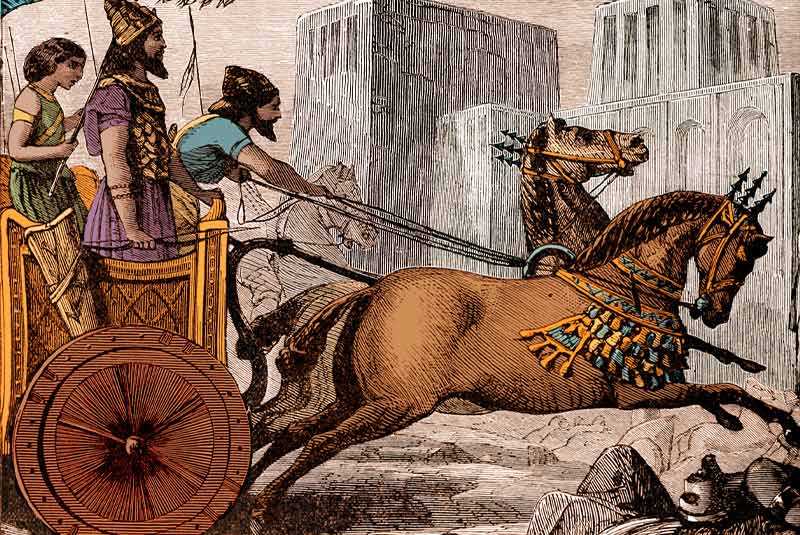
The Greek historian Herodotus is the most major source of his life. The idealized biography of Xenophon is not a history book but rather a work for the Greeks' education on the perfect leader. However, it shows how well-regarded Cyrus was, not just by his nation, the Persians, but also by the Greeks and others. Cyrus the Persian had to first establish his dominance over Persian nations on the Iranian Plateau after inheriting the Medes' kingdom before extending it to the West. Here are some of the most important Cyrus the Persian accomplishments:
Conquest of Ecbatana
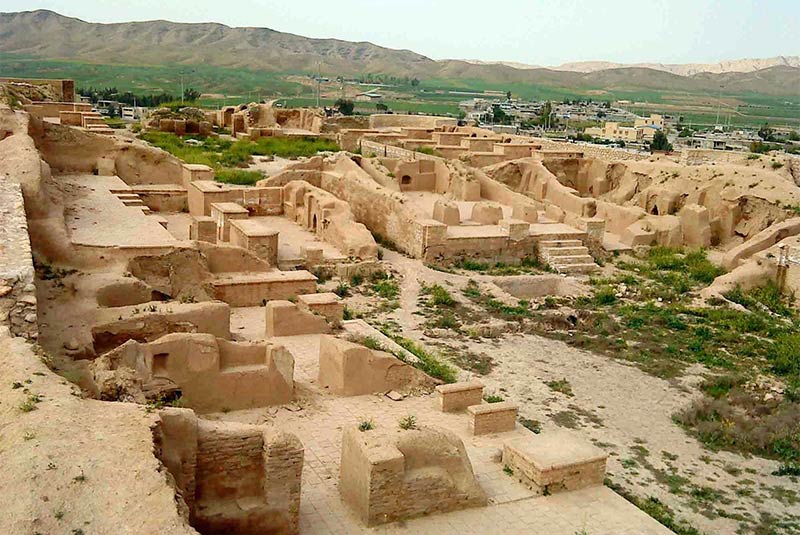
The conquest of Ecbatana, the Median city controlled by Astyages, was Cyrus' first noteworthy accomplishment. The Nabonidus Cylinder of Sippar and the Nabonidus Chronicle are two new Babylonian texts with the earliest reference to this event. We also have a thorough description of this event from Herodotus. The Nabonidus Cylinder of Sippar records that Cyrus, king of Anshan, revolted against the Median king Astyages in 553 BCE. With the aid of his "small army," he routed the "huge Median troops," then seized Astyages and returned him to his native land. Instead, according to the Nabonidus Chronicle, Astyages invaded Cyrus in 550 BCE. Still, his forces seized him as a prisoner and gave him to Cyrus. Ecbatana was then taken by Cyrus the Persian, who also captured the spoils. Assuming that Cyrus began his uprising in 553 BCE, that Astyages marched against Cyrus in 550 BCE, and that the revolution in the Median army took place during that war, the gap in dates between these two accounts may be explained.
The Nabonidus Chronicle and Herodotus' narrative mostly concur. According to Herodotus, Cyrus was pushed to rebel against Astyages, who had wronged him in the past, by Median lord Harpagus. Astyages' authority infuriated the other Median nobles, so Harpagus sought their assistance. Astyages chose the same Harpagus to command the Median army against Cyrus after learning of his insurrection. Harpagus and the other noblemen crossed over to Cyrus as planned when the Median and Persian forces collided. According to every story, Cyrus the Persian chose to save Astyages' life. If Ctesias is to be believed, Cyrus even accepted Astyages as his father, married Amytis, his daughter, and declared himself the legitimate heir to Astyages' throne as king of the Medes. According to Herodotus, the Medes conquered all of Asia except Assyria. While it is frequently believed that Cyrus inherited all these kingdoms, current research indicates that the Medes' realm was much less. Nevertheless, it is probable that Cyrus' influence and reputation on the Iranian Plateau significantly grew due to this triumph.
| Suggestion: Naqsh-e Rustam | Ancient Treasures & Zoroastrian Legacy
The Fall Of Babylon
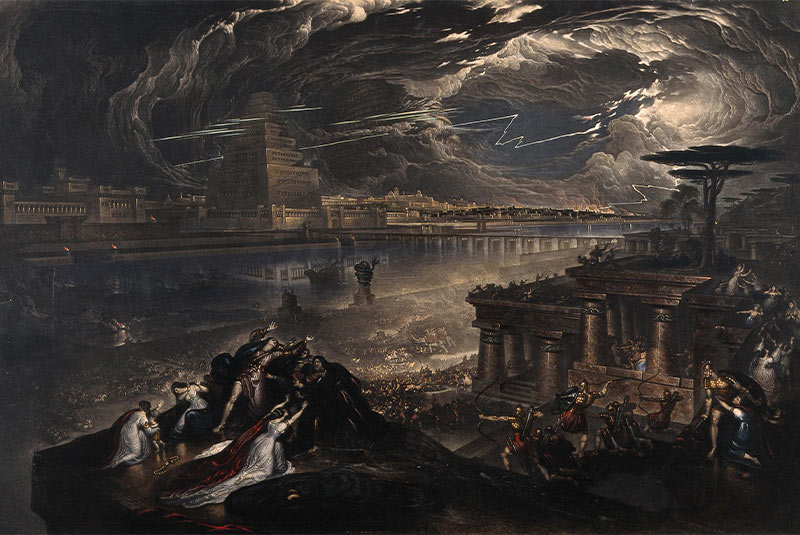
The Persian Empire's army got stronger as it expanded. Cyrus the Persian created an elite group of mounted soldiers that could shoot arrows while riding their horses and used war chariots with blades fastened to the wheels. According to Lee, Cyrus himself looks to have been an amazing leader, and his soldiers appear to have been highly motivated and well-trained. Even during the winter, "he seems to have been able to move his army more quickly than adversaries anticipated." Cyrus the Persian went out to conquer the last great power in Asia's west, the Neo-Babylonian Empire, after his army conquered regions to the east of Persia.
Invading Persian armies routed the Babylonian army in order to take control of the vital Tigris River city of Opis in 539 B.C. A week later, the biggest city in ancient times, Babylon, was surrounded by the Persian forces, which took it without a battle. The Persian monarch triumphantly reached Babylon "in peace, among pleasure and rejoicing," according to the Cyrus Cylinder, a barrel-shaped piece of clay-bearing Babylonian cuneiform writings that was discovered in 1879.
| Suggestion: Molla Sadra | Persian Philosopher and Theologian
Cyrus freed the Babylonian Jews who had been imprisoned by Nebuchadnezzar II following the destruction of the Temple of Jerusalem fifty years earlier, not long after Babylon had fallen. Many people who had been exiled to Babylon were allowed to return to Jerusalem, their spiritual home. God "anointed" Cyrus, according to the Old Testament book of Isaiah, to "subdue countries before him and to strip kings of their armor." The Persian Empire spanned from the Aegean Sea in the west to the Indus River in the east when it conquered the Neo-Babylonian Empire. Cyrus the Persian was able to claim (according to the Cyrus Cylinder): "I am Cyrus, king of the universe," after building one of the biggest empires the ancient world had ever known.
Conquest Of Lydia
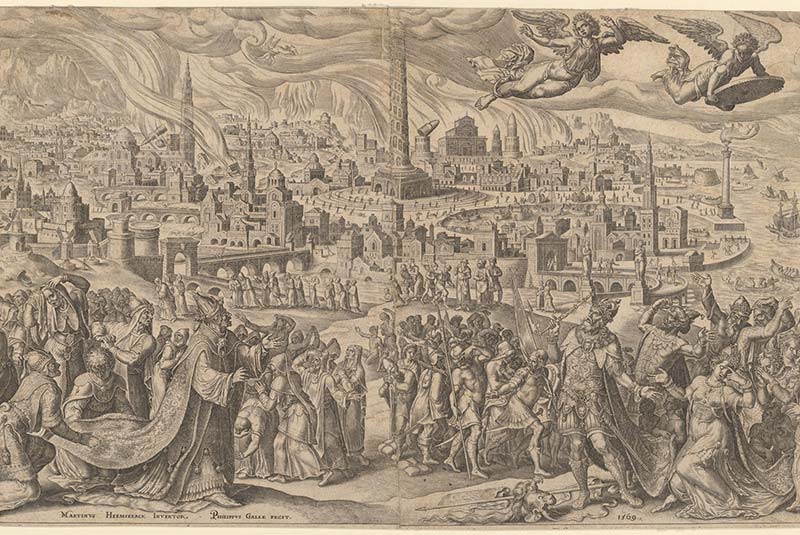
Between the fall of Ecbatana (550 BCE) and the fall of Babylon(539 BCE), Cyrus successfully defeated Lydia. According to the Nabonidus Chronicle, Cyrus is said to have conducted a campaign west of the Tigris in 547 BCE. However, most historians today believe that this campaign had a different goal. Croesus, king of Lydia (560–547 BCE), is credited by Herodotus with starting the conflict by crossing the Halys River and attacking Pteria, a city in Cappadocia that was under the control of the Median Empire. Astyages' ally and brother-in-law Croesus promised to exact revenge on Cyrus after learning that Astyages had been overthrown. The two armies clashed close to Pteria, but there was no victory. Cyrus pursued Croesus into Lydia and met him again near Thymbra when he made the decision to march his troops home for the wintertime. Croesus was forced to retire into his capital city of Sardis due to Cyrus' use of dromedaries to scatter the Lydian cavalry. Sardis was eventually captured after a 14-day siege.
What happened to Croesus after his demise is a topic of debate. All three authors—Herodotus, Ctesias, and Xenophon—agree that while Cyrus the Persian vowed to punish Croesus first, he changed his mind and even made him his special advisor out of compassion. So far, it appears conceivable that Croesus escaped Sardis's collapse. However, other academics think that Croesus was indeed put to death by Cyrus and consider such narratives to be myths. Following the destruction of Sardis, Cyrus appointed Pactyes, a Lydian, as the treasurer of Croesus. It was Pactyes' responsibility to transport these valuables to Persia, but instead, he organized a rebellion by enlisting mercenaries. Cyrus despatched his commander Mazares to put an end to the uprising. Still, after his untimely death, Harpagus finished the conquest of Asia Minor by erecting earthworks to capture the towns of Lycia, Cilicia, and Phoenicia.
Building Of Pasargadae
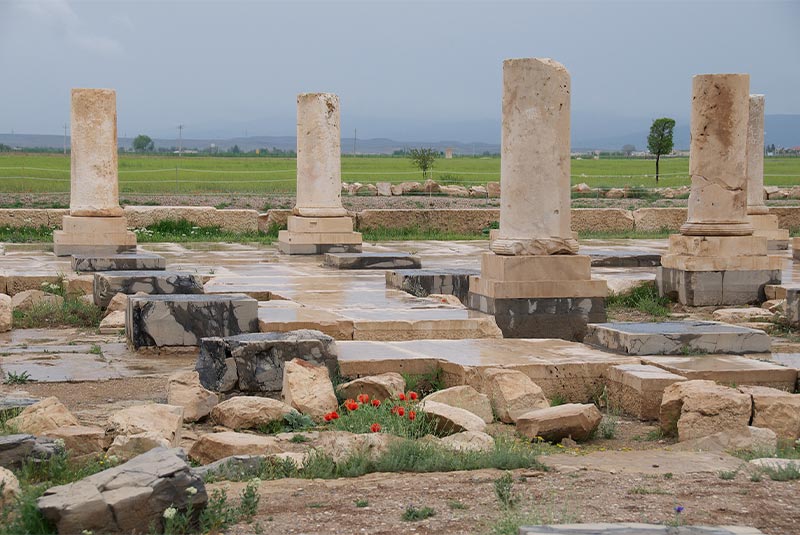
On the location of the battle, Cyrus built Pasargadae after defeating Astyages. The early Achaemenid Empire's ceremonial capital Pasargadae was never intended to hold a sizable population. The Tall-e Takht (a stone fortification on top of a high hill), Palace P (a residential building), Palace S (a columned audience hall), and lastly, the graves of Cyrus and his son Cambyses make up the city's impressive structures, which are dispersed throughout the Murghab plain. Assyrian-style sculptures and Ionian-style brickwork are only two examples of the influences seen in Pasargadae's monuments that come from all over the known globe. The Tomb of Cyrus is believed to be a Mesopotamian or Elamite ziggurat topped with a cella in the Urartaean style. Pasargadae was prosperous for a brief period of time before Persepolis replaced it as the ceremonial capital in 515 BCE.
Other Conquests
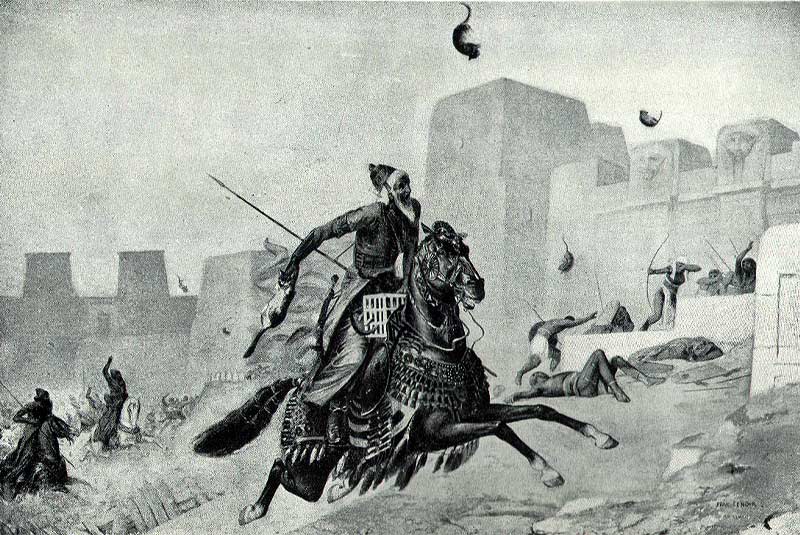
Cyrus must have subdued the Sacae and the Bactrians sometime in the 540s BCE. Ctesias said that the Bactrians freely submitted to them after learning that Cyrus had treated Astyages with respect, suggesting that the Bactrians had either been Astyages' subjects or allies. Cyrus focused on the roving Sacae after expanding his control over the Iranian Plateau's eastern region. Amorges' wife, Sparethra, collected an army of 300,000 soldiers and 200,000 women and beat Cyrus in battle after king Amorges was captured. Amorges was freed by Cyrus the Great, and the two kings united to invade Lydia as one. If this story is correct, Cyrus could have defeated the Sacae and the Bactrians before taking Lydia. Last but not least, Cyrus must have taken Armenia in the middle of the 6th century BCE, maybe appointing his ally Tigranes Orontid as king.
Cyrus The Persian Religion
Many modern academics believe that Cyrus adhered to the principles of Zoroastrianism, the first religion to rule the Persian empire. This assertion is supported by the Zoroastrian Association of Greater New York and Mary Boyce, a specialist in Iranian languages and Zoroastrianism. The religion, based on the prophet Zoroaster's teachings and worships Ahura Mazda as its ultimate lord while emphasizing the dichotomy between good and evil, gathered a large following in the Persian empire around the sixth century. Zoroaster promoted the custom of engaging in universally beneficial good actions that would benefit Ahura Mazda, such as being truthful and kind to others.
Some have disputed Cyrus' Zoroastrianism belief due to the fact that it hasn't been directly stated in modern texts. The Persian monarch honored the Babylonian God Marduk by issuing the proclamation that permitted the Christians to leave Babylon and return to their native country. The proclamation contained texts that stated Marduk had chosen Cyrus to rule Babylonia in place of the despot Nabonidus, who was depicted in the Bible during his brutal conquest of Judea. Additionally, Cyrus's sacrifices were made to Naboo and other gods of the Babylonian kingdom. In addition, the Greek historian Xenophon stated that Cyrus made a vow to Mithra, the Iranian deity of oaths, which may indicate that he revered the traditional Iranian deities.
Cyrus Cylinder (Cyrus The Great Human Rights)
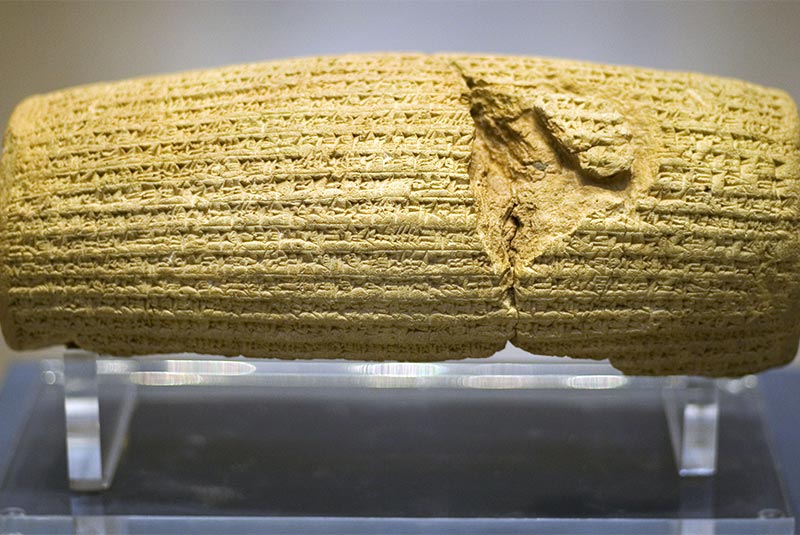
Shortly after conquering Babylon, Cyrus had a building's inscription made in his honor. An audience of Babylonians was given an explanation and justification for Cyrus' invasion of Babylon in this architectural inscription, often known as the Cyrus Cylinder. The text makes strong use of Babylonian royal principles. Cyrus is seen as a divinely chosen savior, whereas Nabonidus is depicted as an ineffective, godless monarch. The Cyrus Cylinder begins by asserting that Nabonidus ignored the worship of Marduk, the deity who serves as Babylon's patron. There may be some truth to this, as Nabonidus did favor the moon god Sîn over the national God Marduk. However, it is possible that the cult of Marduk's neglect was greatly overstated. In addition, Nabonidus made his people perform difficult labor, maybe in anticipation of the Persian invasion. Marduk looks around the world for a really justeous monarch out of compassion for the people of Babylon, ultimately settling on Cyrus of Anshan. Cyrus the Great is guided by Marduk to victory against the Medes. It is assisted in taking Babylon without a fight.
Then Cyrus announces himself as the king of Babylon, the king of Anshan, a son of Teispes, and Marduk's favorite. Cyrus asserts that he did not plunder the city, he did not terrorize anybody, and he regularly worshiped Marduk. He released the inhabitants of Babylon from the rigorous labor that Nabonidus had put them to. Additionally, Cyrus asserts that he sent the temple staff and the idols Nabonidus had brought to Babylon from temples all around Mesopotamia. Cyrus ends his address by thanking Marduk and outlining his construction-related actions.
There were various ways that Cyrus' rule was beneficent. By including them in the political process, he appeased the once-dominant Medes. He absorbed Elamite clothing and decorating customs. He brought back deity statues that had been taken after combat and stored in Babylon to his conquered territories. And he publicly adored Marduk, the famous deity of Babylon. The release of the captive Jews Nebuchadnezzar II had sent into exile in Babylon is considered Cyrus' most famous act of kindness. They were permitted to go back to their promised country by Cyrus. In the Bible, the Jews lauded the Persian monarch as their rescuer, to whom God granted authority over other nations in order to bring them back to Jerusalem and for them to reassemble their Temple.
The United Nations regards the Cyrus Cylinder, which was written in the sixth century B.C.
as "the first declaration of human rights."
Who Were The Persian Immortals?
The Achaemenid Empire's Persian army's elite unit was called the Ten Thousand Immortals (c. 550-330 BCE). During Persian battles, they served as the monarch's personal bodyguard and the infantry's shock units. They were one of the most well-known combat groups in the ancient world. Their number of Persian Immortals is constantly kept at exactly 10,000, and if one of them is killed or unable to carry out his duties, another is chosen to take his place, creating the idea that they are immortal and invulnerable because they cannot be killed. It is believed that the Persian Immortals were first brought together after Babylon was taken in 539 BC. The Immortals are said to have been created by the female commander Pantea Arteshbod, who is considered to have been chosen by Cyrus to lead Babylon and establish them as an elite guard. A counterargument comes from Xenophon, who claims that Cyrus himself created a palace guard from the terrifying troops in his standing army, the Spada, in Cyropaedia, his mostly fictitious history of Cyrus.
The majority of the Immortals were Persians, but a small number of Medes and Elamites were also included in their ranks, demonstrating that Cyrus was not reluctant to grant his old adversaries important posts. Due to their obligation to produce their own military hardware, the Spada and the Immortals represented the richest class in Achaemenid society. From age five, boys were put through rigorous training to join the Spada, learning how to ride horses, shoot arrows, hunt, and survive off the land. They enlisted as soldiers at the age of 20. After a life filled with battle, they were permitted to retire at the age of 50, at which point they received a pension and property rights. The absolute greatest troops were designated as Immortals, said to be in the top 10% of the Spada in terms of battle prowess and character.
Death Of Cyrus The Great

Similar to his early years, Cyrus' latter nine years are mostly unknown. Herodotus asserts that Cyrus lost his life against the Massagetae. This nomadic group dwelt on the other side of the Iaxartes. In order to exact revenge for her son's murder at Cyrus' hands, the Massagetae queen Tomyris reputedly had Cyrus decapitated. In contrast, Ctesias claims that Cyrus perished while attempting to quell a Derbices uprising—another nomadic population from Central Asia—and Berossus contends that Cyrus was killed against the Dahae nomads. Cyrus probably passed away in Central Asia while attempting to increase his power there. It is known that Cyrus passed away before December 530 BCE, thanks to writings in Babylonian. He was laid to rest with his cloak, tools, and jewelry at his tomb in Pasargadae. Cyrus's son Cambyses II succeeded him after his death.
Cyrus The Great Legacy
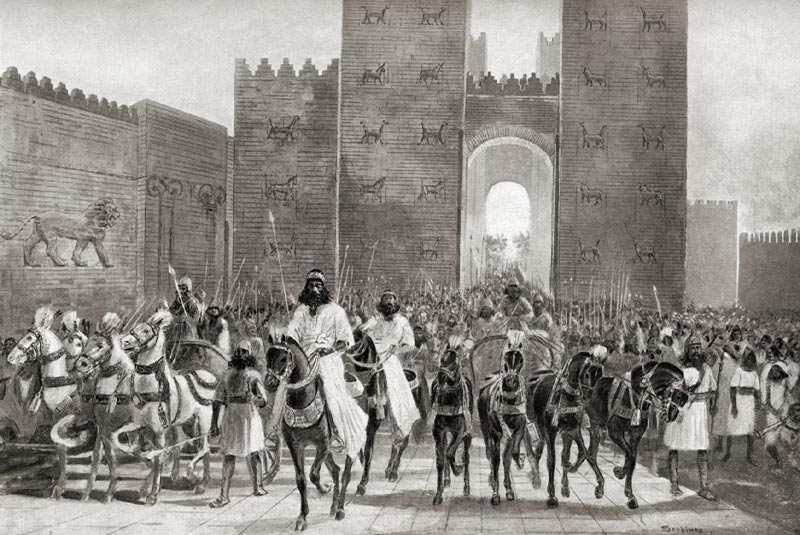
Cyrus brought all the regions between the Aegean Sea and the Iaxartes under his control between the start of his uprising against Astyages in 553 BCE and the time of his death in 530 BCE. He overthrew numerous strong monarchs with a series of quick campaigns, either installing Persian satraps in their places or claiming the title of "king" for himself. He established Persian supremacy over the whole Middle East in this way. Cyrus frequently permitted the local leaders to keep their positions after conquering a kingdom. In this approach, the administrative framework was preserved. He was respectful to his subjects and gained the devotion of the old elites of the kingdoms he overthrew, such as the Median nobles and the Babylonian priests, by accommodating the cultural and religious practices of the territories he invaded.
The fact that the Achaemenian monarchy persisted for more than two centuries after its founder's death speaks much about his power. But in addition to being a great conqueror and ruler, Cyrus the Great also had a special place in the hearts of the Persian people, just like Romulus and Remus did for the Romans or Moses for the Israelites. His epic closely mimics the narratives of conquerors and heroes from other parts of the ancient world. In a similar way to Moses in the Egyptian bulrushes, the newborn Cyrus was handed to a shepherd to raise, and the defeat of his despotic grandpa has parallels in numerous myths and tales. There is no question that the Greeks were aware of the Cyrus legend, which had its origins among the Persians. It was no coincidence that Xenophon picked Cyrus as the role model for a ruler for the lessons he wanted to teach his fellow Greeks. The feelings of respect or even awe that the Persians held him were communicated to the Greeks.
In conclusion, Cyrus the Persian has endured as more than just a legendary king who established a kingdom throughout history. He adopted heroic characteristics as a conqueror who was tolerant, generous as well as bold, and adventurous, and he became the embodiment of the great virtues required of a king in antiquity. Alexander the Great and the Greeks were both impacted by his personality, as seen by the Greeks. Because the Romans passed the legacy, it is possible that we are still being influenced by it now.
Iran commemorated the 2,500th anniversary of Cyrus' establishment of the kingdom in 1971.
Bottom Line
As one of the most merciful conquistadors in history, Cyrus the Persian let his followers live and worship as they wished. Cyrus the Persian ruled with exceptional compassion and charity, and his reign has been honored throughout history.
In order to fully comprehend the significance of Cyrus' policies toward the subject people, keep in mind that the Achaemenid Empire at the time was more than Cyrus' own personal collection of countries that he had conquered. Cyrus the Great empire was mostly kept together by individual royal devotion. The Achaemenid Empire's "imperial structure" eventually grew more conventional, notably following Darius' reforms. Still, it was Cyrus who established the groundwork for the empire via his conquests and his capacity to inspire allegiance in his people.


Comment
Leave a Comment